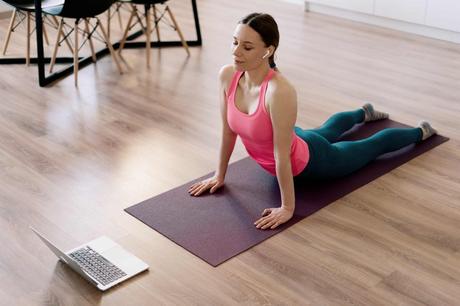If you’re like a lot of people, you’ve modified your workouts significantly since March. You might not be going back to the gym yet (which is a smart move), and the summer months mean there are plenty of options for changing up your workout to include some fresh air and sunshine.
However, most people aren’t personal trainers and have minimal experience when it comes to creating and managing a workout regimen. Without the structure of a gym routine or an in-person personal trainer, making sure you’re making the most of every workout while staying safe can be tough.

For starters, know that you don’t have to spend a ton of money to have a home gym routine that will really work. The machines you see at the gym are one of the biggest draws—and why so many people dish out monthly memberships to go there. However, the weight machines were actually invented in the mid-century to help people establish proper movements when weight training.
They were designed to be a beginner machine or for those in rehab that couldn’t shift yet to the more challenging types of dynamic strength training such as kettlebells or free weights. In other words, you don’t need an expensive weight machine to strength train—free weights or makeshift weights work just fine.
Keep Changing Things Up

If you’ve had a personal trainer before and noticed how they always changed up your workouts every few weeks, there’s a good reason for it. Muscles really do get “used to” movements and workouts, which means they get less effective after a few weeks. The exact date isn’t set and can vary person to person. However, it’s safe to say that changing your workouts every 4 – 8 weeks is a good bet.
You don’t need to constantly be seeking out new workout ideas, either. Going back and forth between workouts every month or two is an effective approach.
When designing a home workout, it’s important to include cardio for heart health and fat burning, weight training for strengthening muscles, and flexibility and balance training. What these three types of workouts have in common is that you don’t need much in terms of materials.
Cardio can include running outside or urban hiking, strength training can be done with just your own body weight, and there are plenty of free yoga classes available to stream.
Feed Your Body Right

If you have a specific goal, whether it’s fat reduction or getting your biceps to a certain size, workouts aren’t even half of the battle. What’s most important is what you eat—and don’t eat.
Most Americans don’t get enough protein, which is absolutely vital for muscle growth. When you eat your protein in the day and the quality of it are big factors. It’s important to eat at least 20 grams of protein immediately after you engage in strength training and definitely within an hour of your session.
When it comes to what you don’t consume, you probably know the basics: added sugar, simple carbs, and alcohol are the trifecta you want to avoid. One fact about alcoholism that isn’t widely discussed is just how drastically it “undoes” all your hard work at your home gym.
Alcohol elicits weight gain, dehydrates you, gets in the way of building muscle, and slows down your workout recovery. It’s one of the worst ways you can get in your own way when it comes to revamping your workouts and getting healthier.
Incorporate New Best Practices Throughout the Day

Re-structuring your workouts, such as incorporating stretching when you didn’t before or changing the types of sets you do, is just part of achieving your goals. There are little things you can do or avoid throughout the day to help you get healthier.
For example, when you workout can make a huge difference. Ultimately, any time that you find time will work, but working out fasted first thing in the morning can help to burn extra fat—and get your day started right. Aiming to drink at least 75 percent of your body weight in ounces of water each day will help with recovery and dehydration. Scheduling your allotted trips to the pantry if you’re working from home can help avoid unnecessary snacks and calories if fat reduction is a goal.
Thinking about your body as a holistic machine isn’t just a new perspective that will help you get healthier but also a much-needed form of self-care. The physical body is just part of the equation.
Taking care of your mental, emotional, social, and perhaps spiritual health will all help you reach any goal faster. That’s why incorporating yoga followed by meditation (it doesn’t need to be long!) can be a great addition to any workout regimen. Working from home is allowing us more time thanks to no commute—but more time for what?
It’s not just about re-structuring your workout. It’s time to re-structure your routine throughout the day. What are little things you can do to increase your health? From opting to stand to work more often than you sit to investing in an ergonomic chair or scheduled mini workouts throughout the day, it’s time to get creative and personal. How do you want your healthy life to look?
Author’s Bio: Emily Walters is an accomplished content writer who’s comfortable writing on an array of topics, from business, healthcare, and technology to travel, culinary, education and even fashion & lifestyle. Emily is a graduate of The University of Texas at Austin and lives in San Diego where she enjoys yoga, cycle classes, and cooking healthy, vegan meals.

